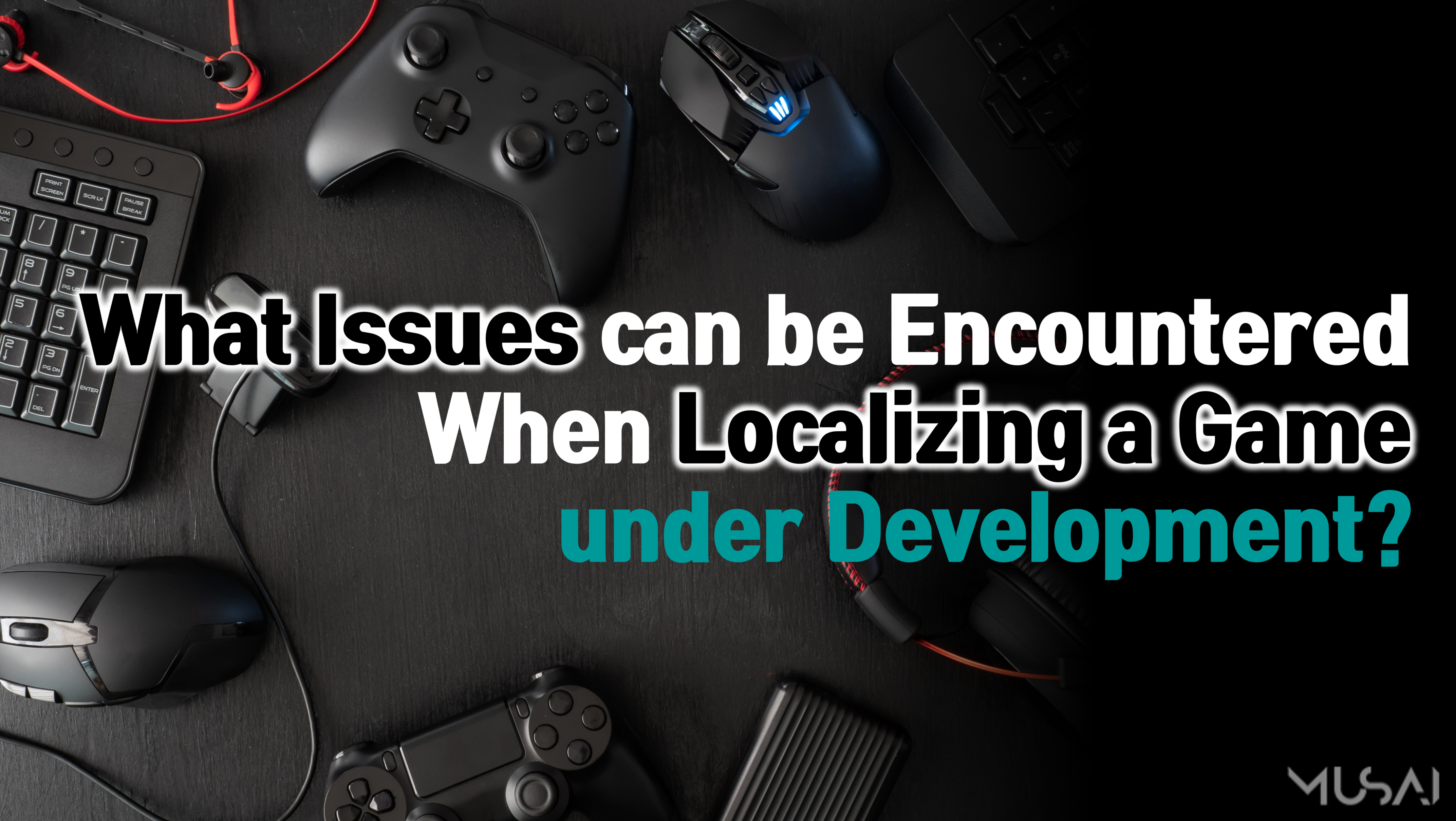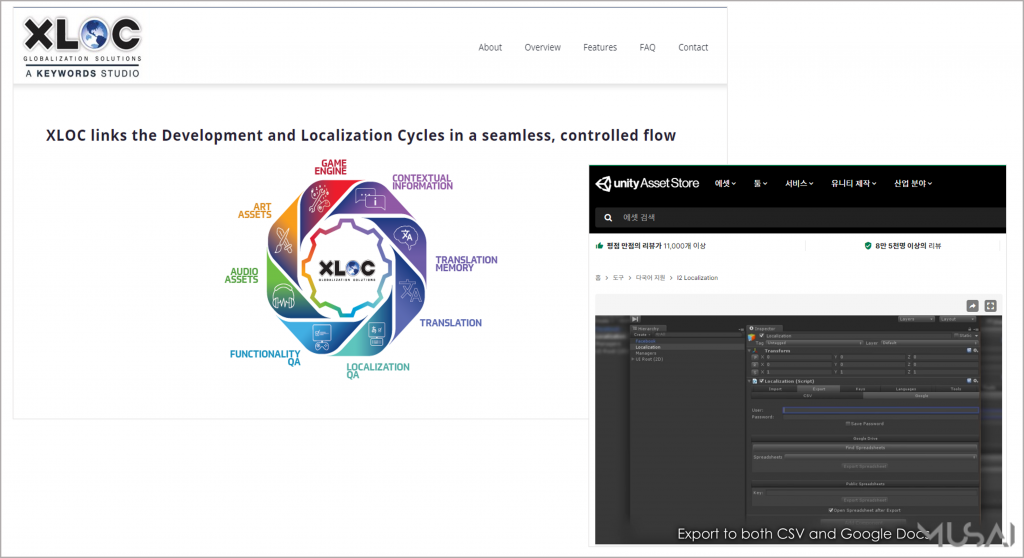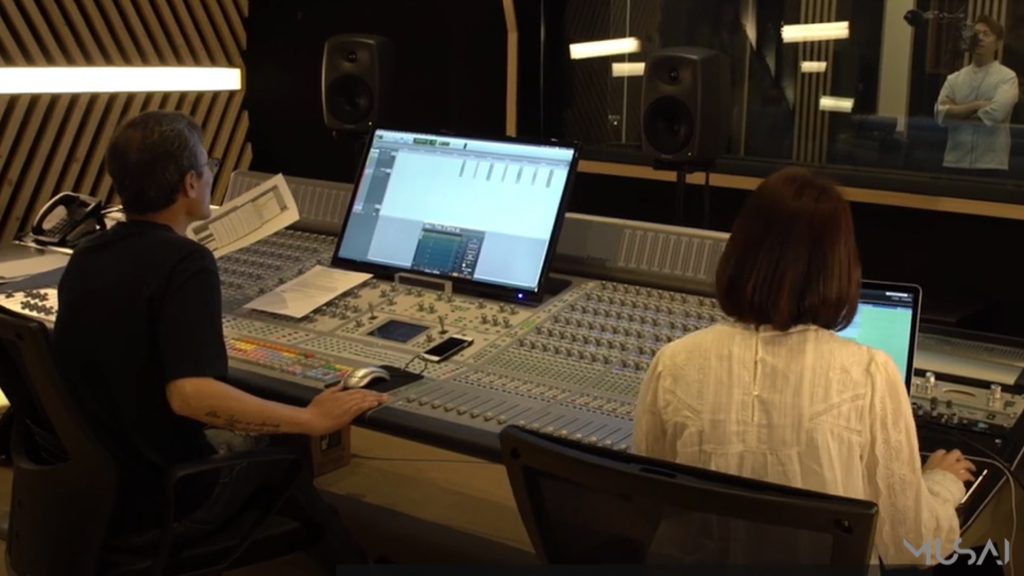[MUSAI] What Issues can be Encountered When Localizing a Game under Development?

2021-10-15
The concurrent release to the global market which is called ‘simship’ has now become an essential trend in the gaming industry. There are more things to prepare, and the overall schedule is tighter. In particular, localization which is a process at the very end of the game development before release has been affected significantly. Most games are required to start working on localization while the game is still under development.
In fact, Musai Studio carries out nearly 100 projects every year, from large projects to small projects, but it is very rare to work on released titles or fixed contents. Simship moved up the development schedule and it means the localization process must be started before the content is completely confirmed to meet the release schedule.
When localizing a game under development, there are inevitable issues. Tight schedules, frequent updates, and lack of information. Of course, these are nothing new if you have been involved in game localization projects. Those challenges have always existed since the beginning of the industry, but the localization of games under development usually brings a different level of difficulty. The word “under development” means that any changes can be made to a game – a character that was important yesterday can suddenly disappear today for instance. This environment requires not only localization agencies, but also the localization department of game companies to handle a very demanding schedule. The practice of ‘Crunch mode’ to meet a deadline has become controversial issue in the video game industry.

Despite the huge trend of simship, the need to provide foreign players with comprehensible and correct localization for immersive play has not changed. Let’s discuss what issues may arise when localizing a game under development and what preparations we can take to maintain the localization quality.
Part 1. In-game text localization of a game under development
The importance of asset management
Assets are downloaded, edited, saved, and uploaded so many times during the entire localization process. In light of the process, not only localization agencies but also game companies are having a hard time in file-handling while tons of files fly, and it is even more serious for a game under development due to the frequent update of the source files.
Therefore, it is recommended using software that allows you to manage the files with efficiency. For example, you can choose a content management system such as ‘Xloc’ that manages localization assets, or a program within a game engine such as ‘Unity’. However, these tools don’t include all the various functions of the CAT tools that localization agencies mainly use. Consequently, if you use these tools, you may have to export and import the assets to work with the CAT tools.

Management skills of updates directly affect the localization budget
Even one short sentence in a game can be changed at least two or three times, or dozens of times at most. Those updates can be managed within the CAT tools, and if needed, they should be handled in Excel sometimes due to the project conditions. The reason you need to manage your updates carefully is that it’s related to the budget directly. For game companies, minimizing the updates and eliminating unnecessary process is one way to reduce the localization budget. However, don’t believe that the final version is “final” even in the last minute before launching. It can be changed at any time.
We are always ready to send an NDA. PLEASE send the context.
In the past, according to the security policy, game companies requested to sign an NDA first. Recently, however, localization agencies often suggest signing an NDA first and the reason is to get more information about the project. The more information about the project, the better the localization quality will be. The source text can be changed according to the game development, but if even a little bit of information and contextual clues to the text are provided, the localization process will go through much more efficiently and adapt modified strings easily.
Part 2. Voiceover of a game under development
Take the advantage of the guide track for your voiceover
In the case of voiceover for a game under development, it is suggested that you record the guide track first. The guide recordings will help not only the main recording sessions but also game development efficiently.
Once the draft of the recording script is complete even though the game is still under development, you can start to record the guide track immediately. The guide track can be recorded in a professional recording studio with voice talents, and there’s no problem to be done by the amateur like the staffs in the game company or recording studio without voice talents as well.
If you check the lip sync, the length of the line, and the mood of the conversation through the guide recordings while developing a cinematic or in-game video, it helps to prevent the problems related to the length of video and scripts that possibly happen in the main recording session. This small difference often brings the greatest impact on the quality of actual recordings.

Part 3. Project management of a game under development, “be agile!”
The localization managers of game companies are already aware of the tight schedule. That’s why they sometimes give notice when the project will start in advance to the localization agency and this heads-up is significantly helpful to the agency.
However, even the heads-up from game companies can be changed and the localization schedule will be pushed back depending on the development status. Therefore, it’s recommended to be agile in terms of project management. Since it’s not predictable when the localization project can be started exactly, it’s also required to operate resources flexibly.
The possibility of cancellation still exists even though a heads-up on the project was provided, so setting up teams and resources too early can be risky. The bad news can often be heard that the project was canceled after the recruitment of staff has been done.
There are no right solutions to fix the issues we’ve talked in today’s article. However, it can be concluded that collaboration and teamwork between game companies and localization agencies are the best solutions to create efficiency. Moreover, it should be emphasized again that being agile in adapting to unexpected changes is important since there are so many changes and various issues in the localization process of a game under development.
In accordance with the ever-changing environment of the game industry, our efforts and new attempts to provide better localization service will keep move forward. See you in the next article with a more informative topic.
** Did you enjoy the news of Musai? Please click subscribe and share the story.
BOOST YOUR PLAY! Musai Studio







